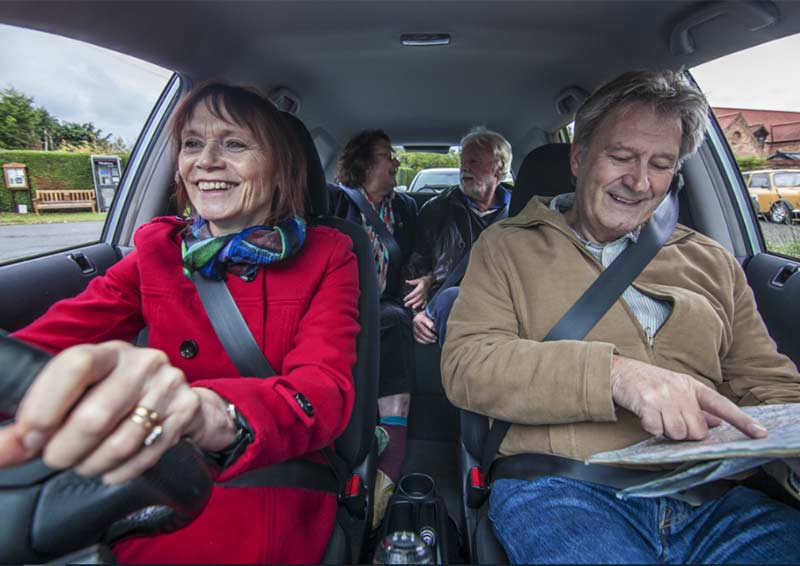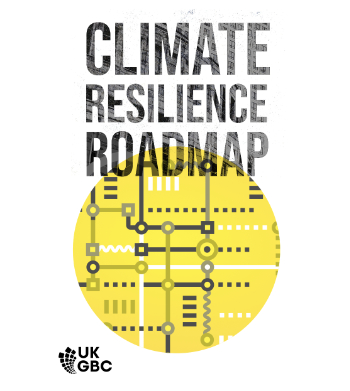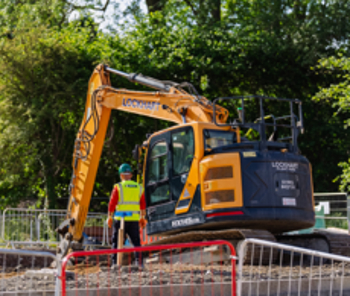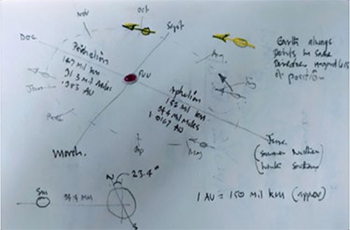Car sharing
With Tesla Autopilot, Google Waymo, and even driverless Uber taxis hitting the roads in 2016, it seems the autonomous era of robot cars is well on the way. At the same time, the 'sharing economy' grows consistently worldwide with a projected growth rate of 22% in the US alone.
It seems one sector is all about people, and the other taking responsibility away from people, so how do the two fit together?
More people already commute to work by car sharing than by train. Over 100,000 people already share trips every day on Liftshare but this is still just scratching at the surface of huge potential – there are still 38 million empty car seats every rush hour across the UK.
Assuming car sharing and car clubs continue to grow in popularity, as they have been in line with wider sharing economy growth: what happens to the lift-sharer when neither person needs to drive?
A major factor to consider is the licensing implications around a car that doesn't require a human driver. If laws stay similar to those at present, it could be that at least one fully licensed person will need to be in the car at all times, regardless of intervention into the autonomous system.
In this case, those who can't drive would still need to share with someone who could. In 2016, this was around 28% of the British population within driving age - in the region of 13 million people who may still need a lift.
This, of course, is reliant on legislation requiring some kind of qualification - whether that’s a full UK driving licence, an 'intervention licence' of sorts, or a whole new training programme based specifically on autonomous technology. If this isn't required, then the choice as to whether or not you want to share your journey may be taken out of your hands.
Liftshare recently surveyed members about their main motivations for sharing car journeys.
The most common is to save money. As current insurance rules stand someone offering out their spare seats cannot make a profit without impacting on a hire and reward clause. Therefore, any money exchanged must be stringently calculated and be no more than a contribution towards petrol and general wear and tear.
This margin of pricing means that for most taking a lift works out cheaper than public transport, particularly when booking at short notice before a trip. To help ensure members stay on the right side of the rules, systems like Liftshare calculate the chargeable price based on mileage and the number of seats available.
The second reason is to 'do their bit for the environment'. Given the ongoing accusation that ridesharing companies such as Uber are actually increasing the number of cars on the road, and therefore traffic, we want to be eco-friendly wherever we can. Two people getting into one petrol-fuelled car is still better than one in a petrol car and one in a hybrid.
Unless autonomous vehicles are entirely electric - and more energy-efficient than current models - then anyone eco-minded would likely still consider shared trips as a more sustainable option.
The final but important factor is socialising. Whether it’s networking with a colleague, singing along to the radio 'carpool karaoke'-style, or learning something new, the social aspect of shared travel is often underestimated.
Some find comfort in having someone else with them for safety and others just like to talk and meet new people. Whatever the level and topic of discussion or interaction connecting with another human being can, as technology stands, not be beaten.
While autonomous vehicles will likely include a lot of features that aren't purely based on the ability to drive without a human will they include something as interactive, unpredictable, and in some cases, heart-warming as a person?
If not, then our cravings for sharing human interaction will still stand and sharing will remain safe as an opportunity for not just some saved pennies and a warm feeling as your carbon footprint reduces but as a chance for synergy with another one of 'us'.
This article was originally published here by ICE on 13 February 2017. It was written by Lex Barber, Liftshare.
--The Institution of Civil Engineers
NB Emissions Gap Report 2019 published by the UN Environment Programme defines ride sharing/car sharing as: ‘Two forms of arrangements in which two or more people share a vehicle for transportation. In ride sharing, also known as carpooling, the driver takes a passenger along for a ride that the driver gains utility from as well, often for commutes or long distance trips. This arrangement is distinguishable from ride hailing or ride sourcing, both of which are a form of taxi service. In car sharing, a person hires a car from another for a limited duration of time without the owner to undertake the desired trip.’
[edit] Related articles on Designing Buildings Wiki
- Articles by ICE on Designing Buildings Wiki.
- Are electric bikes the future?
- Autonomous vehicles and the insurance market.
- Car club.
- CarTube.
- Changing lifestyles in the built environment.
- Cycling and walking plan.
- Data-driven mobility.
- ‘Future Roads of Grand Paris’ Exhibition.
- How to connect unconnected vehicles.
- London car charging infrastructure.
- Ride-hailing.
- Ride-sharing.
- Sustainable transport.
- Transport assessment.
Featured articles and news
Homes England supports Greencore Homes
42 new build affordable sustainable homes in Oxfordshire.
Zero carbon social housing: unlocking brownfield potential
Seven ZEDpod strategies for brownfield housing success.
CIOB report; a blueprint for SDGs and the built environment
Pairing the Sustainable Development Goals with projects.
Types, tests, standards and fires relating to external cladding
Brief descriptions with an extensive list of fires for review.
Latest Build UK Building Safety Regime explainer published
Key elements in one short, now updated document.
UKGBC launch the UK Climate Resilience Roadmap
First guidance of its kind on direct climate impacts for the built environment and how it can adapt.
CLC Health, Safety and Wellbeing Strategy 2025
Launched by the Minister for Industry to look at fatalities on site, improving mental health and other issues.
One of the most impressive Victorian architects. Book review.
Common Assessment Standard now with building safety
New CAS update now includes mandatory building safety questions.
RTPI leader to become new CIOB Chief Executive Officer
Dr Victoria Hills MRTPI, FICE to take over after Caroline Gumble’s departure.
Social and affordable housing, a long term plan for delivery
The “Delivering a Decade of Renewal for Social and Affordable Housing” strategy sets out future path.
A change to adoptive architecture
Effects of global weather warming on architectural detailing, material choice and human interaction.
The proposed publicly owned and backed subsidiary of Homes England, to facilitate new homes.
How big is the problem and what can we do to mitigate the effects?
Overheating guidance and tools for building designers
A number of cool guides to help with the heat.
The UK's Modern Industrial Strategy: A 10 year plan
Previous consultation criticism, current key elements and general support with some persisting reservations.
Building Safety Regulator reforms
New roles, new staff and a new fast track service pave the way for a single construction regulator.

























Comments
I stumbled upon this incredibly informative article about car sharing on Designing Buildings. I have to say, I was absolutely captivated by the wealth of knowledge and insights shared here. As someone who is deeply passionate about sustainable transportation solutions, it's refreshing to see such a comprehensive resource.
While going through the article, I couldn't help but think about the essential components that keep vehicles running smoothly. That's why I want to share a fantastic online store that I recently discovered. They offer a wide range of top-quality bearings that are crucial for ensuring optimal performance and longevity of your vehicle.
By incorporating the right bearings into your car's mechanics, you can experience a noticeable improvement in efficiency and overall driving experience. I highly recommend checking out bearing store,they provide exceptional customer service, speedy delivery, and products that are built to last. Trust me, their dedication to excellence is truly unmatched.
Whether you're a car enthusiast, a professional mechanic, or simply someone who wants to make their car perform at its best, is your go-to destination for all things bearings. So, don't miss out on this incredible resource and take the first step towards optimizing your vehicle's performance today!
Did you know you can create a company profile, write an informative article and then connect the article to your account, so that your logo and website appears at the top. Just search "Create an article".